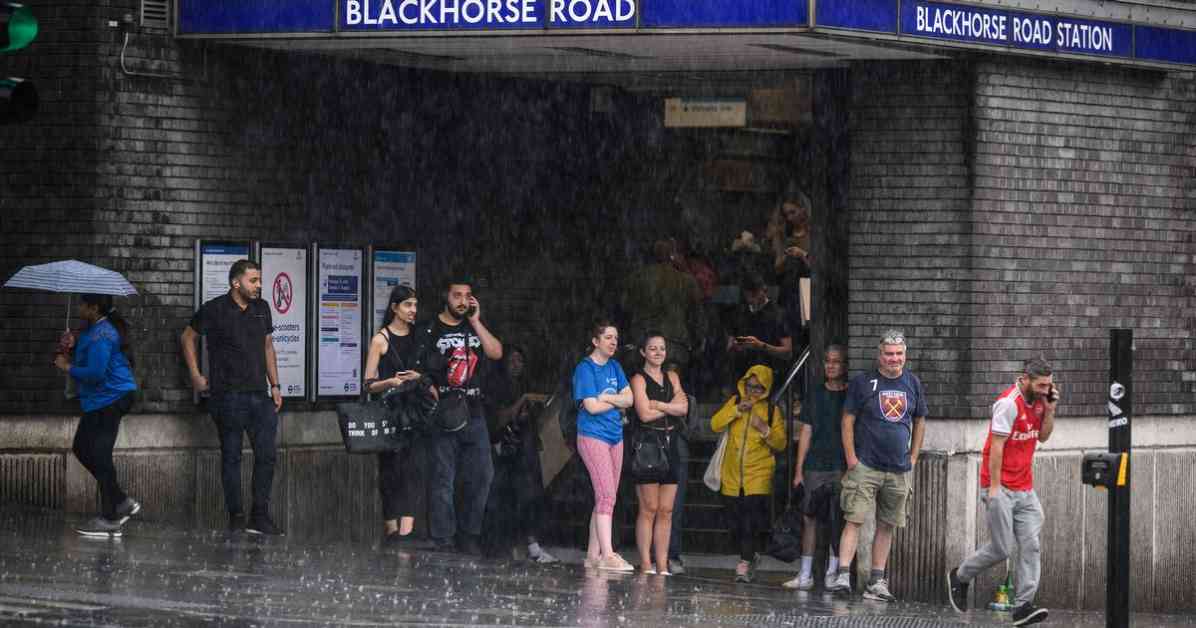Transport for London (TfL) is sounding the alarm on the potential risks posed by extreme weather conditions to its Tube stations. The authority has conducted a thorough assessment of the vulnerabilities at three key stops on the London Underground network as part of its efforts to safeguard against flooding in underground shafts and portals. This proactive approach comes in response to the escalating threats posed by climate change and the increasing frequency of severe weather events.
Assessment of Risks
TfL’s assessments have identified 333 risks categorized as ‘minor, moderate, major, and severe’ across three timeframes: 2021, 2050, and 2080. The authority’s committee documents highlight a significant concern regarding the ‘major and severe risk’ of ‘extreme precipitation’ leading to potential flooding of stations. This poses a dual threat by impacting services and causing substantial damage to critical assets and infrastructure.
In particular, TfL has focused on conducting a climate risk assessment for three ‘case study sites’—King’s Cross, Stratford, and South Harrow. The findings revealed that surface water flooding and extreme heat represent the most significant risks. To address these challenges effectively, TfL has put forth a series of recommendations aimed at enhancing its response capabilities and resilience to these environmental threats.
Response Strategies
One key strategy being considered by TfL is the incorporation of weather hazards into its incident reporting systems. By integrating this data, the authority aims to gain a deeper understanding of the operational impacts of severe weather, assess future risks more accurately, and align its business planning accordingly. Beyond flooding, the potential effects of ‘extreme high temperatures’ on transport operations and infrastructure have also been identified as major concerns due to their potential impacts on the health, safety, and well-being of staff, tenants, and customers.
TfL is actively managing climate risks through the implementation of its Climate Change Adaptation Plan. This comprehensive strategy involves integrating adaptation requirements into asset strategies and engineering standards, leveraging research and modeling to enhance risk assessment capabilities, and collaborating with industry partners and stakeholders to share best practices in adaptation measures. These proactive measures illustrate TfL’s commitment to staying ahead of climate-related challenges and ensuring the resilience of its transport infrastructure.
Mayor’s Initiative
In a move to bolster the city’s resilience against flooding, Mayor of London Sadiq Khan announced plans to deploy a new network of flood detection devices across the capital. This initiative aims to safeguard critical transport infrastructure, including Tube stations, in the event of heavy rainfall. Additionally, City Hall has proactively reached out to properties deemed at risk of flooding, such as basement flats and businesses, to provide tailored guidance and support to residents facing potential threats.
Mr. Khan emphasized the importance of proactive measures in mitigating climate risks and protecting London’s vital infrastructure. By deploying advanced technologies and engaging with at-risk communities, the city aims to enhance its preparedness and response capabilities in the face of evolving climate challenges. These initiatives underscore the city’s commitment to sustainable urban development and climate resilience, setting a strong example for other urban centers grappling with similar threats.
As we navigate an era of unprecedented climate change, the importance of proactive risk assessment and adaptation strategies cannot be overstated. TfL’s proactive approach to assessing climate risks and implementing targeted interventions serves as a blueprint for resilient urban infrastructure management. By prioritizing climate resilience and sustainability, London sets a precedent for cities worldwide to follow in building a future-proof urban environment that can withstand the challenges of a changing climate.





















